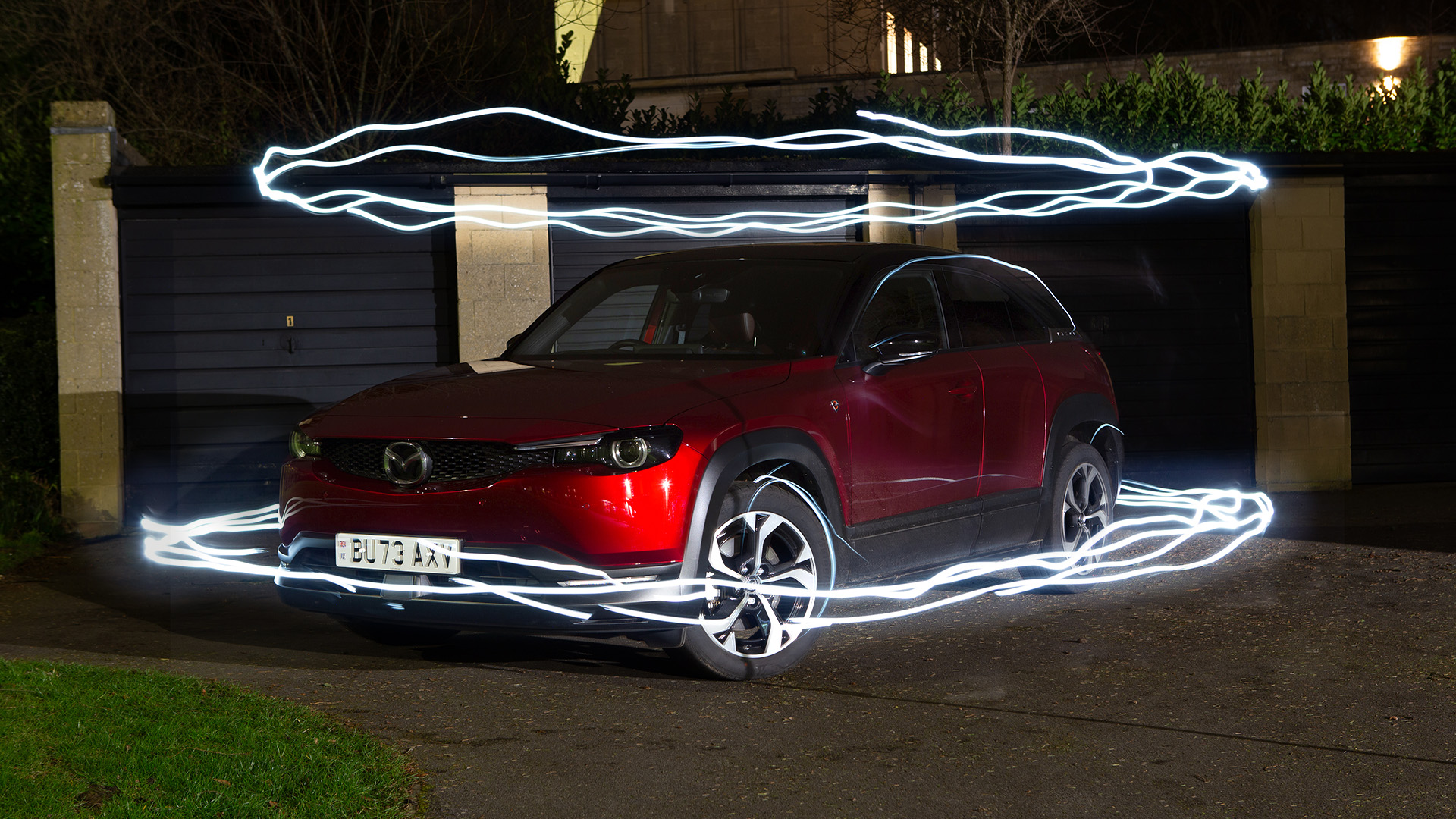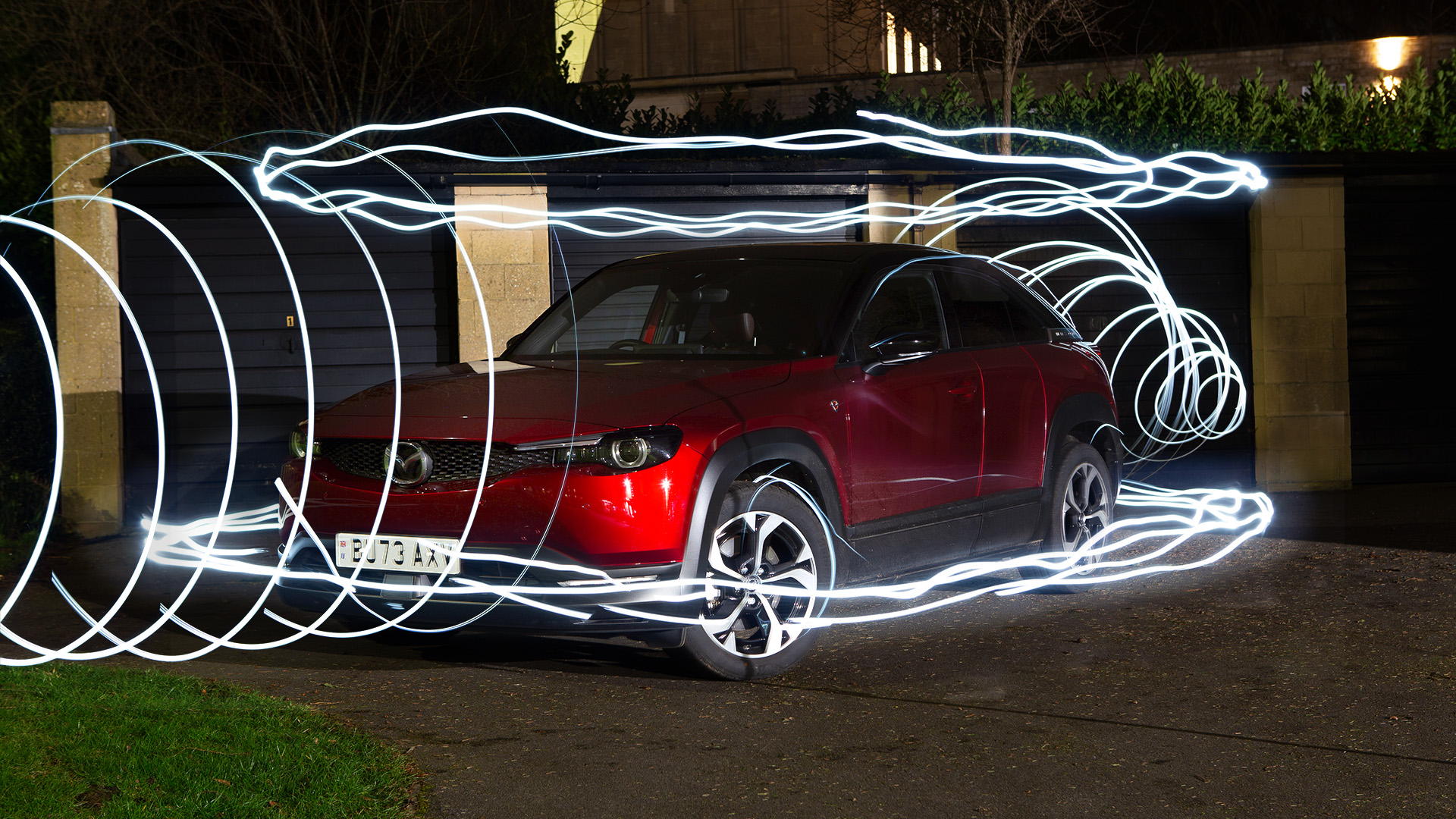
The Mazda MX-30 R-EV could solve that tough decision for those looking for something more economical. Moving from a petrol or diesel engine to a fully electric car is a big one and can be scary, especially when you hear stories of poor charging infrastructure. While keeping an electric car charged isn’t as hard as many tabloid papers would have you believe, there is a handy stepping stone in the form of a plug-in hybrid.
Mild hybrids tend to offer very small amounts of electric range and practically only give a slight boost to the petrol engine power. PHEVs, however, offer a more considerable range thanks to larger battery units allowing to realistically run on electric only for all of those shorter journeys.
Mazda’s MX-30 comes in a fully electric form with a 35.5kWh battery and 124 miles of range. The newest edition though uses a smaller 17.8kWh battery alongside an 830cc rotary engine. This gives the car a 53-mile electric-only range while giving another 350 miles using the petrol engine. This means that you can have the benefits of electric for city driving and petrol for longer journeys, or let the car use a combination of the two for ultimate efficiency and performance.
I spent a week with the MX-30 R-EV to see how it performed as a daily drive and was pleasantly surprised with how it got on.
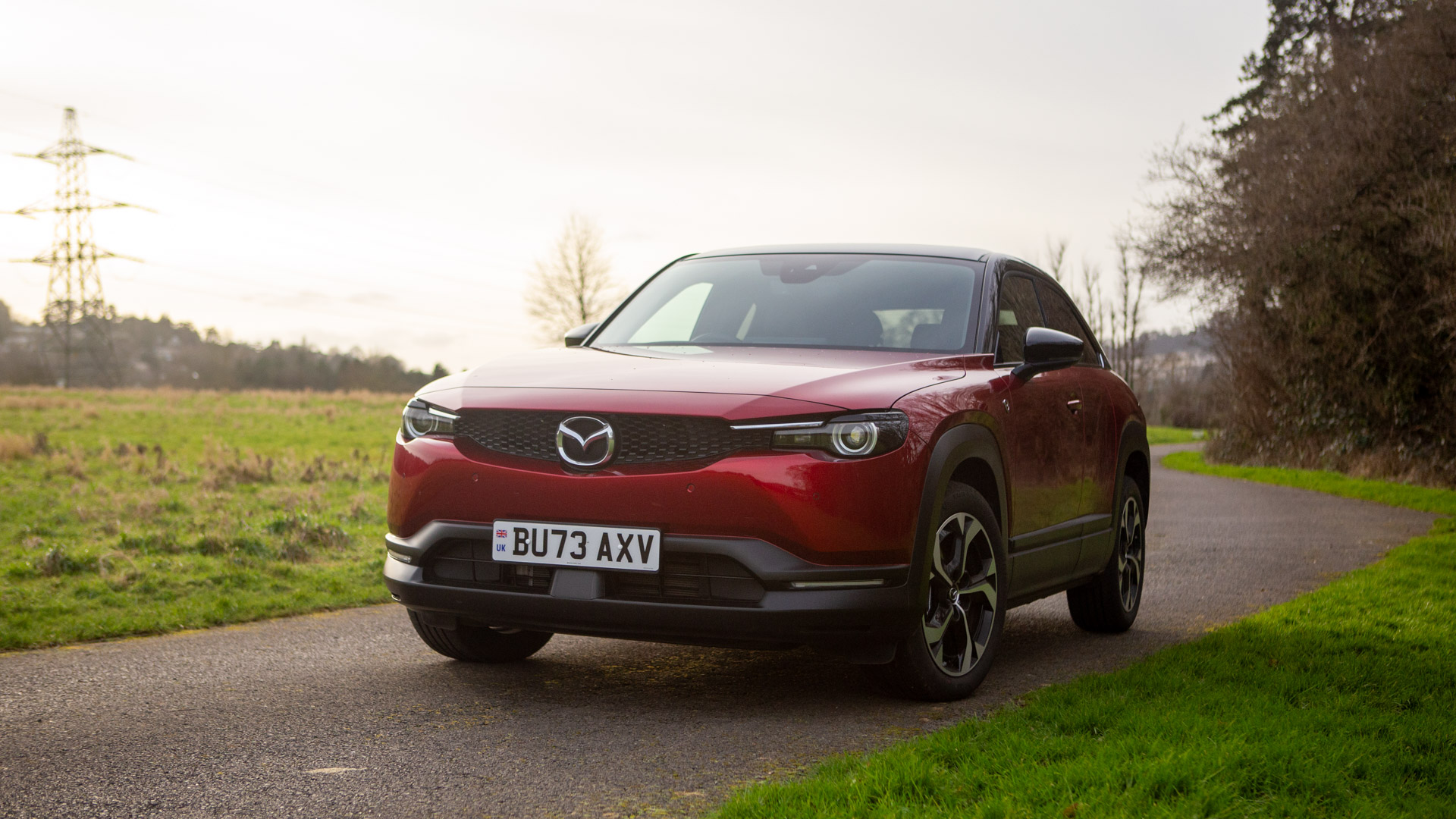
How much does the Mazda MX-30 R-EV cost?
Starting from £34,750, the hybrid is a reasonably priced solution, though at its base price, is more expensive than the fully electric version. Like the electric model, it comes in three versions, the base Prime-Line, the Exclusive Line (adds a powered eight-way driver seat, keyless entry and privacy glass), and the top-spec Makoto model, which starts from £39,050.
Not only does the Makoto add premium touches like the 12-speaker Bose system and a 360-degree camera view, but it also gives you three-pin plug sockets in the cabin and the boot, to power electrical devices like laptops or even mini-fridges.
I tested the Mazda MX-30 R-EV Makoto model in soul red crystal with black panels and 18-inch diamond cut alloys, priced at £41,178.
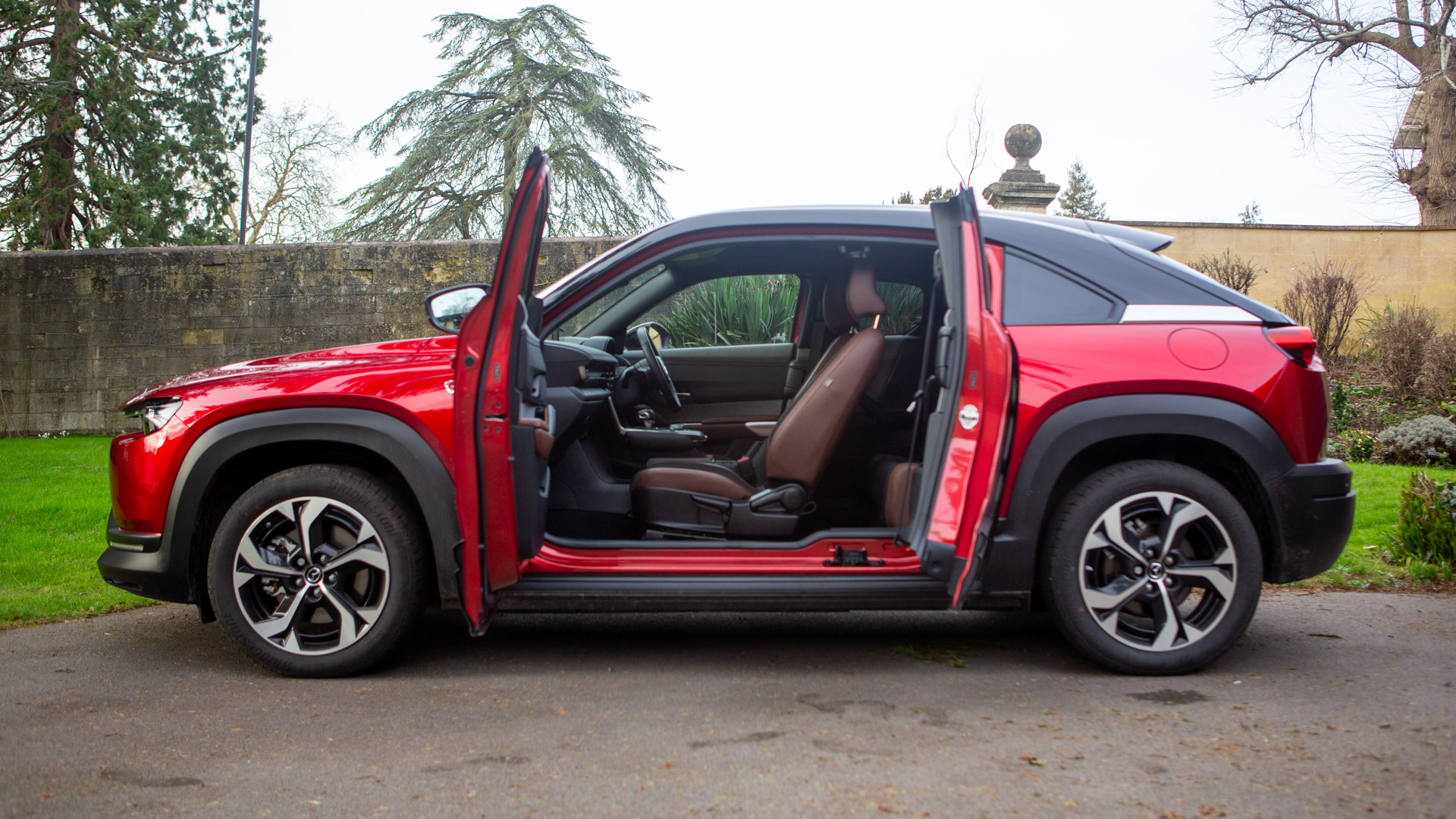
Design and features
The rotary engine has been a feature of Mazda’s cars since the 1960s, offering a small and powerful solution in cars such as the RX-7 and RX-8. The new rotary engine in the MX-30 R-EV is the smallest and lightest solution yet, using an aluminium housing to keep the weight down. By combining this with an electric motor, the car can negate the regular problems of hybrids being too heavy and produce something really appealing.
Visually, the car looks near identical to fully electric version. It has a heightened mini-SUV crossover design that’s also similar to the Mazda CX-30 which comes in a mild hybrid version. The MX-30 R-EV has an unusually shallow grill for an SUV style, which faces the front of the car a fresher feel. The grill runs straight into the LED headlights, forming a wider face to the car.
The wheel arches are slightly squared off, giving that crossover or SUV feel while the keeps a simple hatch look, with two separate rear light clusters and a small spoiler above the window. The biggest difference on the MX-30 though is the rear doors. Following the iconic RX-8 design, these freestyle, handleless doors open in reverse, or suicide style as they are often called. This means that they actually extend the opening made by the front doors, with no central pillar, making it easier to access the back seats, despite the small rear door.
These unique doors also have the effect of making the MX-30 look like a 2-door vehicle. It’s a cleaner design and a sportier one too. Though it’s certainly not got the style of the MX-5 or even the RX-8, for this sector of the market, it’s a very nice-looking vehicle.
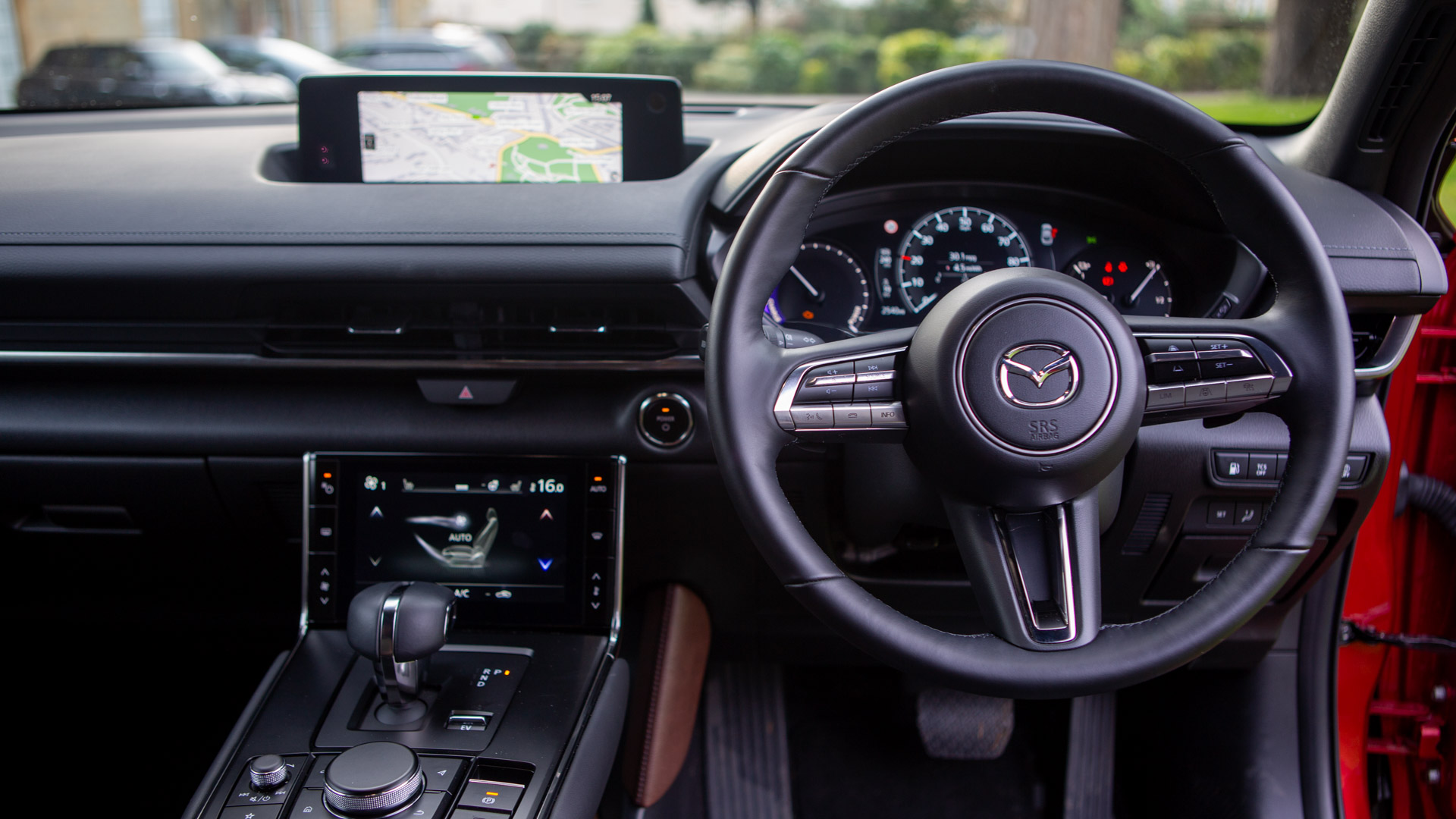
Inside the Mazda MX-30 R-EV
Inside the car, the design also takes a very clean look. The trims feel luxurious, with my test model finished in dark grey cloth and brown leatherette. It’s not a colour I would have chosen, and the grey and black leatherette is likely to be more popular but it’s nice to see something a little different.
There are a surprising amount of screens in this car, though none are particularly large. The driver gets a 7-inch instrument panel and a head-up display with plenty of information on it, to keep your eyes on the road. Then there’s the main 8.8-inch infotainment system mounted in the top of the dash. It’s slightly too far to reach and isn’t actually a touchscreen – instead, it’s operated via the dial and quick buttons in the centre. Another screen – a 7-inch touch display in the centre console – is there purely for climate control.
It seems a waste having this well-positioned climate display unable to provide some of the infotainment features. It would almost be better to replace both centre displays with a single, larger touchscreen unit, as many other brands have done.
The infotainment system feels a little dated on the MX-30, due to the menu structure and lack of touchscreen, though you can connect to Apple CarPlay or Android Auto. Of course, this still needs to be controlled via the dial control or voice, so isn’t ideal. One saving grace here is the 12-speaker Bose sound system, which delivers a powerful sound with plenty of bass too.
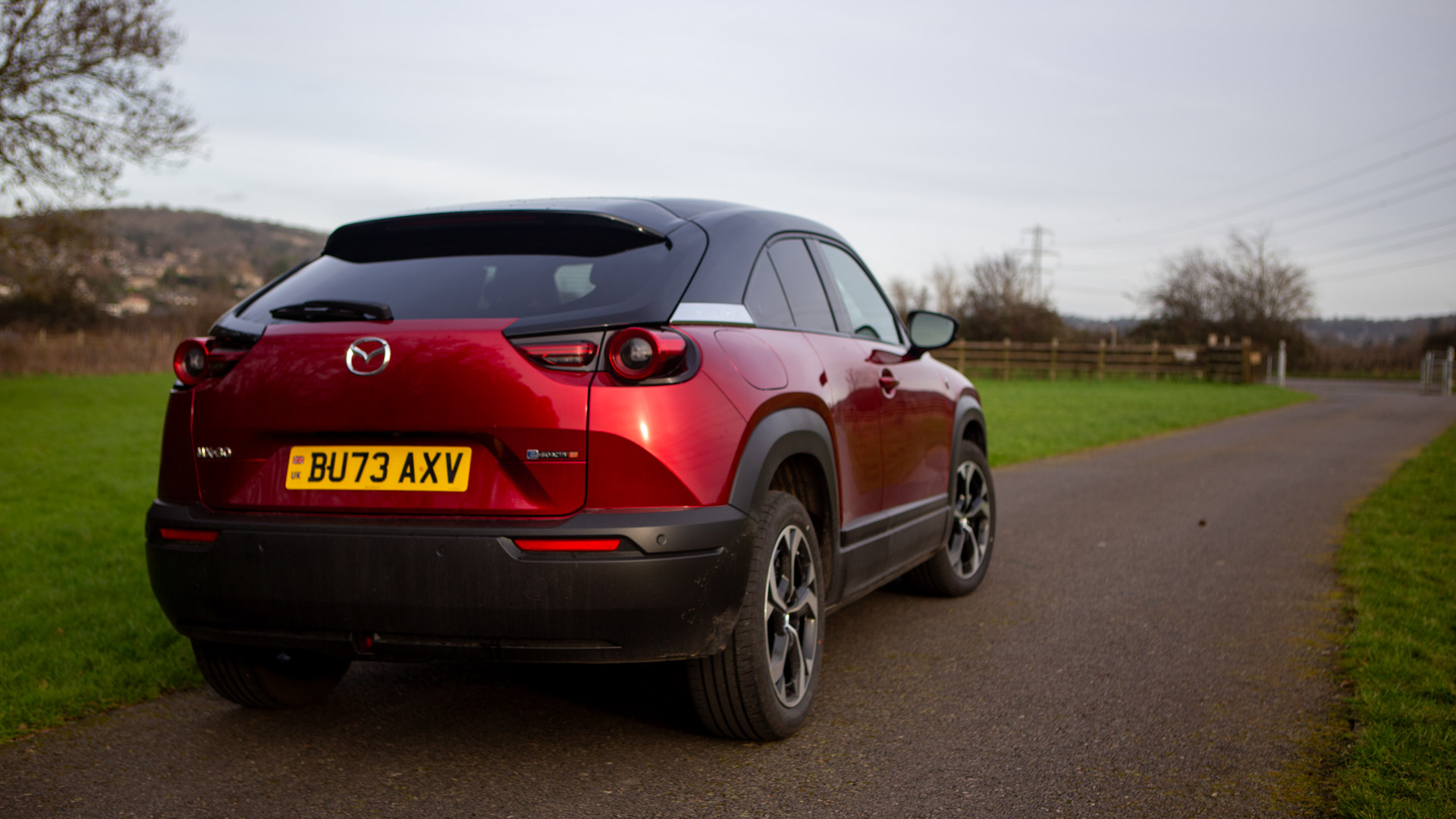
Drive and performance
There are two big benefits to this rotary engine, electric motor hybrid. The first is the massive increase in range, by engaging both systems and the performance. While the fully electric model gives 145 mechanical horsepower (ps), the hybrid delivers 170 ps. That means it gives a more rapid acceleration of 9.1 seconds from 0-62mph, as opposed to 9.7 seconds.
That’s a better performance for sure, but it’s by no means fast. In testing the car really does lack a sense of urgency that we’ve come to expect from more premium electric and hybrid models, and I found myself often with my foot flat on the floor. Of course, a car like this isn’t designed for acceleration, it’s designed for efficiency.
That said, the MX-30 R-EV is actually pretty fun to drive around town. It’s pretty nimble, with responsive steering that makes it easy to manoeuvre around narrow streets and car parks. It also has a decent 360 camera (in the Makoto version) that makes parking really easy, giving you a top-down view of the car. The sound from the tiny rotary engine isn’t your average engine noise though, and thanks to everything going through that electric motor, it still sounds like an electric car most of the time.
The car is also decent on bigger roads. The raised crossover position gives you a clearer view of the road, though there’s lots of room to adjust that position and sit lower like in a saloon if you prefer. The only downside is that the MX-30 actually feels quite compact inside, so there isn’t a huge amount of space for passengers in the back, though the boot is a reasonable 332-350 litres (depending on the audio system).
Perhaps the best part of this car is the range from that 17.8kWh battery, it can deliver up to 53 miles. That means for most drivers with a home charger, you could do all of your short trips on electric power only – just having to switch to petrol power for long journeys. The car can be manually switched from Normal to EV mode, or to Charge Mode, to charge the battery as you drive using petrol power. However it can take a long time to recharge it this way, and using an electric charging point is easier.
The battery can be charged using a fast DC charger, at up to 36kW, which will top up from 20% to 80% in around 25 minutes. Or if you have a home AC charger, it will take 50 to 1 hour 30 minutes depending on your charging speed.
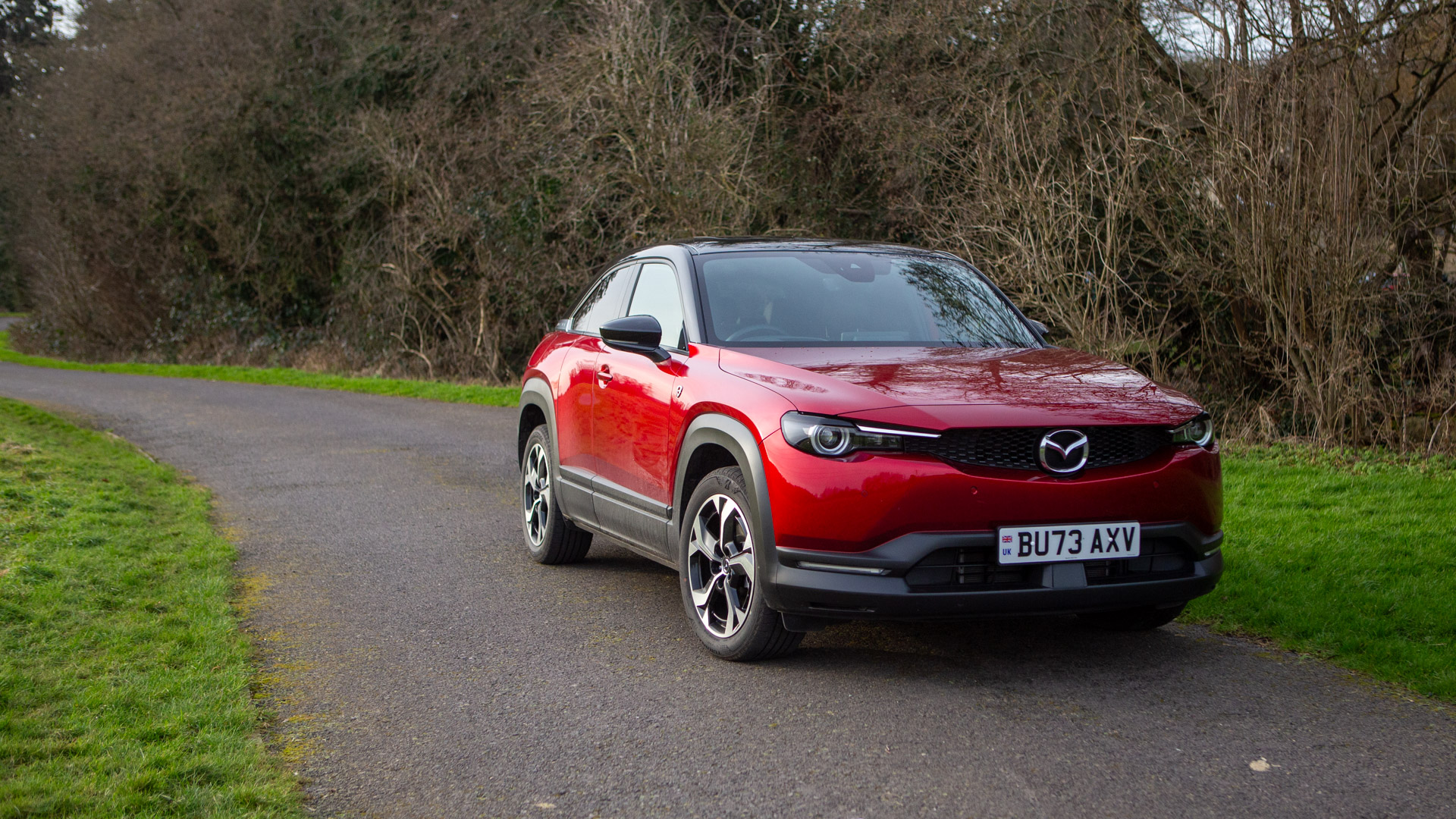
Should I buy the Mazda MX-30 R-EV?
In some cases, it doesn’t make sense to opt for the plug-in hybrid model, when a full electric is available. However, this hybrid is arguably a better choice than the fully electric MX-30 EV right now. While it costs a little bit more, the extra power and huge range potential from still having a 50-litre fuel tank on board, make this a sensible choice for those who still want to take some longer drives as well as city trips.
It would be nice to see a more powerful version of this car, that used a larger rotary engine or could direct that battery power for shorter bursts of fast power. However, in doing so, you might lose what makes this such an interesting proposition.
If you want a practical city runabout that can run all day on electric power and still give you the option to do longer runs without range anxiety, the Mazda MX-30 R-EV is a great option.
